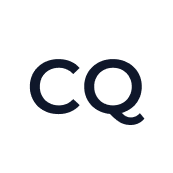The market for fund management software is diverse, offering a wide range of solutions tailored to meet the specific needs of different organizations. Choosing the right software requires a deep understanding of the features, benefits, and limitations of each option. This guide will help you compare and evaluate various solutions, enabling you to select the one that best aligns with your organization’s investment strategy.

Table of Contents [show]
Guide to Choosing the Right Fund Management Software
Finding the ideal fund management software requires a strategic approach to ensure it meets your firm’s specific needs and positions you for long-term success. With the right solution, fund managers and asset managers can streamline operations, enhance decision-making, and maintain a competitive edge in the dynamic world of investments.
Below is 5 factors to consider when selecting Fund Management Software:
1. Assessing Your Requirements
Before evaluating fund management software options, it’s essential to understand your organization’s specific needs and objectives. Tailored solutions are key to achieving the best outcomes.
Key Areas to Evaluate:
- Investment Strategy: Define your strategy, asset classes, and risk tolerance. Select software that aligns with your investment approach, particularly if you manage alternative investments.
- Regulatory Requirements: Ensure the software offers robust compliance features tailored to relevant regulations in your jurisdiction and industry.
- Reporting Needs: Look for customizable reporting capabilities to meet client, regulatory, and internal reporting demands.
- Workflow Preferences: Opt for software that integrates seamlessly with existing systems, streamlining your operational processes.
2. Budget Considerations
Budget plays a critical role in your selection process, but it’s also important to evaluate the long-term value the software can provide.
Factors to Consider:
- Total Cost of Ownership: Account for upfront costs, maintenance fees, and additional expenses like customization or integration.
- Scalability: Choose a solution with flexible pricing models to support growth and expansion.
- ROI Potential: Assess how the software enhances efficiency, reduces manual work, and boosts investment performance to justify its cost.
3. Scalability and Future Growth
Scalability ensures your software can grow alongside your organization, accommodating increased demands over time.
Consider These Aspects:
- Portfolio Size: Ensure the software can handle current and future portfolio growth without performance trade-offs.
- Transaction Volume: Opt for solutions that efficiently manage rising transaction volumes.
- User Growth: Select software with scalable user licensing options to support additional users and concurrent access.
4. Integration with Existing Systems
Seamless integration with current systems enhances operational efficiency and minimizes data silos.
Integration Capabilities:
- Data Sources: Ensure compatibility with external data providers, custodians, and accounting systems.
- Third-Party Applications: Look for robust APIs and pre-built integrations with CRMs, risk management tools, or other essential software.
- Workflow Integration: Ensure the software aligns with existing processes to reduce disruption and improve efficiency.
5. Vendor Reputation and Support
The vendor’s stability and support capabilities significantly impact long-term success with the software.
Key Considerations:
- Vendor Stability: Choose a proven vendor with a strong track record and financial stability.
- Customer References: Seek insights from current users about satisfaction with support and overall experience.
- Support Services: Opt for vendors offering comprehensive training, documentation, and responsive technical support.
For more insights about choosing right fund management software, check out: 5 Features to Elevate Your Strategy in Fundraising Management Software

Top 5 Fund Management Software in the US
Selecting the right fund management software is critical for investment professionals aiming to streamline operations, enhance decision-making, and stay competitive in the dynamic financial landscape. Below are the top 5 fund management software solutions in the US, offering powerful features and tailored functionalities.
1. BlackRock Aladdin
- Best For: Institutional investors and asset managers.
- Key Feature:
- Comprehensive risk management tools.
- Advanced market analytics.
- Seamless trading and reporting integration.
- Why It Stands Out:
Aladdin offers end-to-end investment management with unparalleled analytics.
2. eFront
- Best For: Private equity and alternative investments.
- Key Features:
- Portfolio performance tracking.
- Private equity modules for deal tracking.
- Regulatory compliance tools.
- Why It Stands Out:
Tailored for alternative investments, eFront simplifies operations and enhances transparency.
3. Investran
- Best For: Complex fund structures and fund administration.
- Key Features:
- Automated accounting processes.
- Real-time portfolio tracking.
- Scalable solutions for growing firms.
- Why It Stands Out:
Known for its accuracy in fund administration and strong reporting tools.
4. Addepar
- Best For: Wealth managers and multi-asset class investors.
- Key Features:
- Intuitive reporting tools.
- Performance tracking across asset classes.
- Integration with custodians and financial platforms.
- Why It Stands Out:
Addepar simplifies complex reporting with dynamic dashboards and data visualization.
5. CQ
- Best For: Investment managers, brokers, and capital allocators.
- Key Features:
- AI-Powered Insights: Transform data into actionable strategies with AI.
- Investment Memo Generator: Create professional-grade memos in minutes.
- Extensive Database: Access 150K+ investor profiles and 95K+ asset managers.
- Secure Data Room: Facilitate due diligence with centralized document management.
- Real-Time Collaboration: Enhance teamwork and track engagement metrics.
- Why It Stands Out:
CQ combines cutting-edge tools with a user-friendly interface, delivering tailored solutions for alternative investments.
Want to know more about the benefits of using our software? Visit capq.ai.
What Makes CQ the Right Choice?
Stands out as a top-tier solution for fund management with its AI-powered platform designed specifically for alternative investments, CQ is a next-generation fund management software tailored for the alternative investment ecosystem.
Designed by industry veterans, it offers specialized tools to address fundraising inefficiencies, optimize workflows, and enhance decision-making.
Why Choose CQ:
- AI-Driven Insights: Gain actionable intelligence from CQ’s database of 150,000+ investor profiles, enabling smarter investment decisions. By integrating predictive analytics, CQ ensures fund managers can identify and prioritize high-value opportunities.
- Investment Memo Generator: Create polished, professional memos in minutes with CQ’s AI-powered tools, saving time and ensuring quality. The memo generator simplifies documentation while maintaining accuracy, a critical advantage during due diligence and investor pitches.
- Streamlined Deal Management: Centralize deal tracking and communications, using secure data rooms to manage due diligence. This ensures faster turnaround times and minimizes bottlenecks in deal workflows.
- Enhanced Reporting: Access customizable reports to meet client, regulatory, and operational needs. CQ’s reporting tools are designed to align with industry standards, ensuring compliance and transparency.
- Robust Security: SOC 2 compliance and encryption safeguard sensitive data. User-controlled access permissions further enhance data protection, giving fund managers peace of mind.
When evaluating fund management software, prioritize solutions like CQ that combine innovation, adaptability, and a deep understanding of the investment landscape.

How to Implement Fund Management Software?
Implementing fund management software requires a structured approach to ensure a smooth transition and maximum adoption.
Steps for Success:
- Planning Phase:
- Clearly define project objectives, such as improving operational efficiency or enhancing data management.
- Set realistic timelines and milestones, factoring in training, data migration, and testing phases.
- Allocate necessary resources, including budget, personnel, and technological infrastructure.
- Data Migration:
- Assess existing data for accuracy, completeness, and relevance.
- Map data fields between legacy systems and the new platform to ensure compatibility.
- Perform data cleansing to remove duplicates and rectify inconsistencies, ensuring a smooth transition.
- Conduct test migrations to validate data integrity and accuracy before full implementation.
- Training and Onboarding:
- Provide role-specific training programs tailored to users’ needs. Utilize hands-on sessions and sandbox environments to boost confidence.
- Offer continuous learning resources, including user manuals, online tutorials, and help desks.
- Testing and Quality Assurance:
- Conduct functional testing to validate features and workflows.
- Perform integration testing to ensure seamless data exchange with third-party systems.
- Test system scalability under different load conditions to confirm performance stability.
- Go-Live Support:
- Develop a deployment plan outlining key responsibilities and contingencies.
- Provide real-time support to address user queries and technical issues during the transition.
- Monitor system performance and gather user feedback for post-launch optimization.
Best Practices for Fund Management Software
To fully harness the benefits of fund management software, follow these best practices:
- Regular Updates and Maintenance: Keep the software updated with the latest patches, features, and security protocols to ensure optimal functionality.
- Training and User Engagement: Invest in ongoing training programs to familiarize users with advanced tools like CQ’s investment memo generator and data room functionalities.Encourage users to explore new features to maximize the platform’s potential.
- Leverage AI-Driven Insights: Use CQ’s predictive analytics to identify market trends, optimize investment decisions, and enhance due diligence processes.
- Monitor KPIs: Track key performance indicators (KPIs) such as portfolio performance, transaction turnaround times, and user adoption rates to measure success.
- Encourage Feedback: Create feedback channels for users to share insights and suggest improvements. Learn to select and implement fund management software with AI insights, secure data rooms, and customizable investment memos. Regularly refine workflows based on user input.
- Ensure Data Quality: Implement data validation protocols to maintain accuracy and consistency across systems.
- Focus on Security and Compliance: Regularly audit system security settings and compliance measures to meet regulatory standards and protect sensitive information.
Conclusion
The right fund management software is more than a tool – it’s a strategic asset that empowers organizations to achieve operational excellence and superior investment outcomes. With advanced features like AI-driven insights, investment memo generation, and secure data rooms, platforms like CQ set a new standard for fund management in the alternative investment space. By carefully evaluating your needs and following best practices, you can implement a solution that drives growth and positions your firm for long-term success.
You also may like:
- Top 8 Investor Databases for U.S. Fund Managers and Asset Managers in 2025
- Top Private Equity Fund Management Software in 2025
- Fundraising Platforms: Transforming Asset Management with AI




